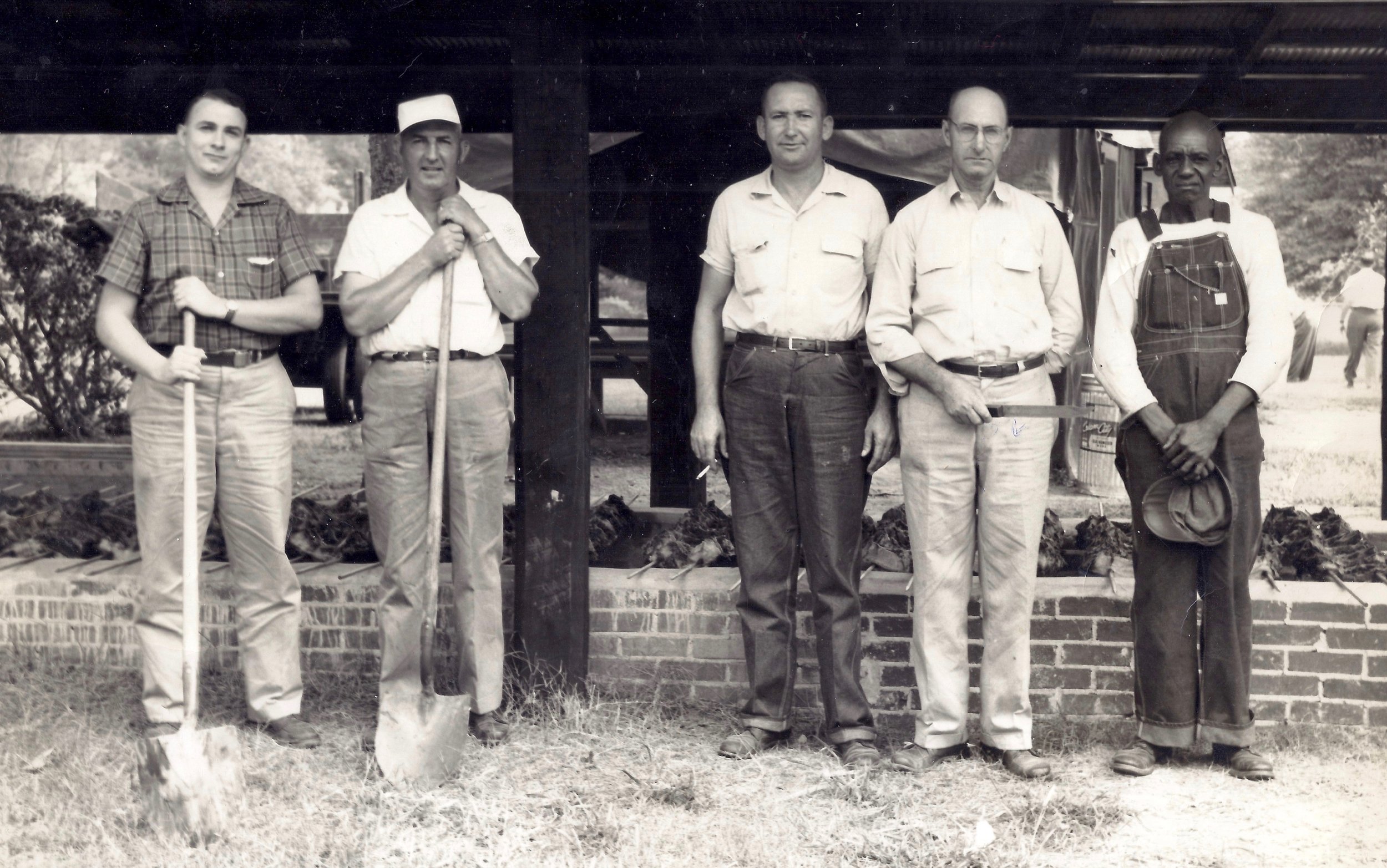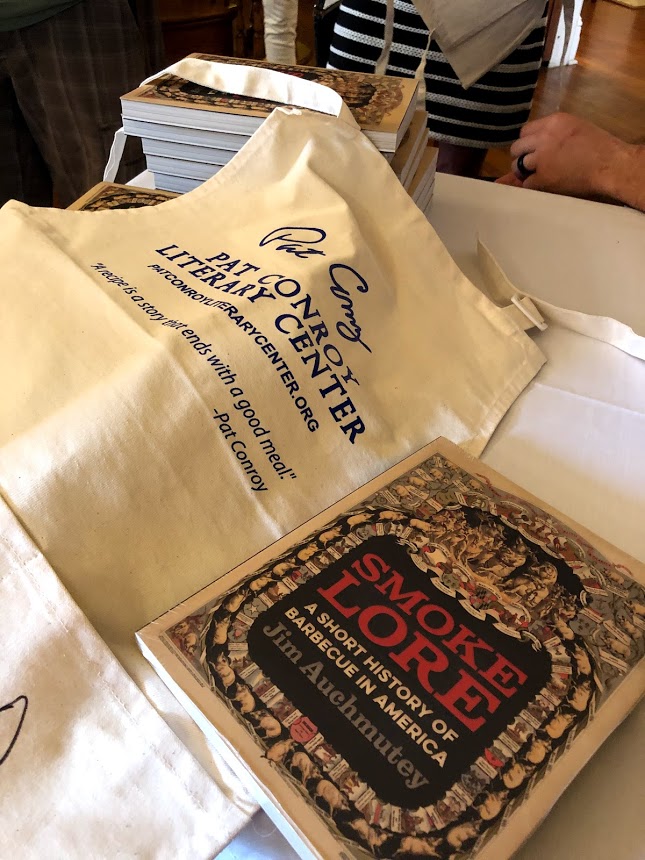I was barely 2 when my grandfather died, so I never really knew Bob Auchmutey (or "Daddy Bob," as the family called him). But I knew him by reputation, and an important part of his memory was a July 1954 article in the Saturday Evening Post titled "Dixie’s Most Disputed Dish." The story was set at the Euharlee Farmers Club barbecue, where my grandfather oversaw the pits and stew pots. I’ve mentioned it a few times since "Smokelore" was published.
Well, Trey Gaines, the director of the Bartow History Museum, saw one of those interviews and invited me to come to Cartersville to speak. Of course, I said; it’d be like going home.
I was expecting maybe 40 people to show up for the lecture late last week. There were more than twice that many — so many they had to move the talk next door to the much larger auditorium in the Booth Western Art Museum.
It was a pleasure to speak about barbecue history and my family’s connection with it in a place where some people had personal memories of my grandfather back when he ran community barbecues in the Etowah River valley. See that second photo below? I’ve always wanted to identify all the men in this portrait of Bob Auchmutey’s pit crew from about 1956. That’s my Uncle Earl on the left and Daddy Bob second from right, holding the butcher knife. I don’t know who the three others are, but I have some good leads now from people I’ve met in person and online in Bartow County. (If you think you recognize one of them, please contact me.)
My talk in Cartersville was one of the most personal and memorable evenings I’ve spent in promoting "Smokelore." Many thanks to the Bartow History Museum, Scott’s Walk-up Bar-B-Q (a great barbecue place in Cartersville that catered the event) and the Booth Western Art Museum. I think Daddy Bob would have been proud. I’m proud of him.









